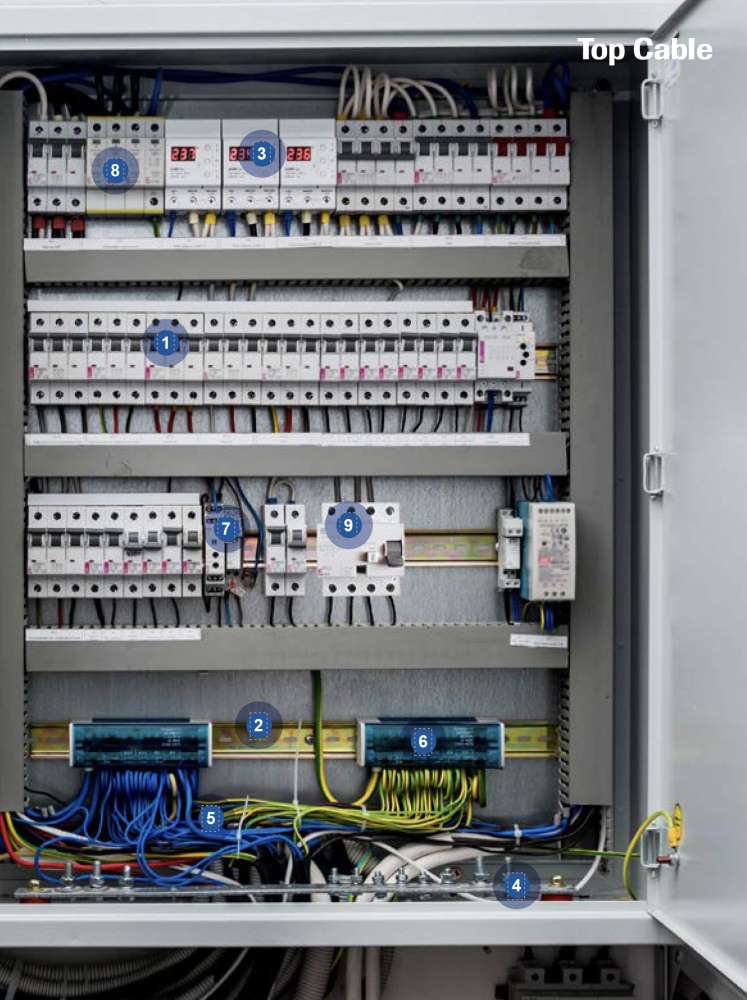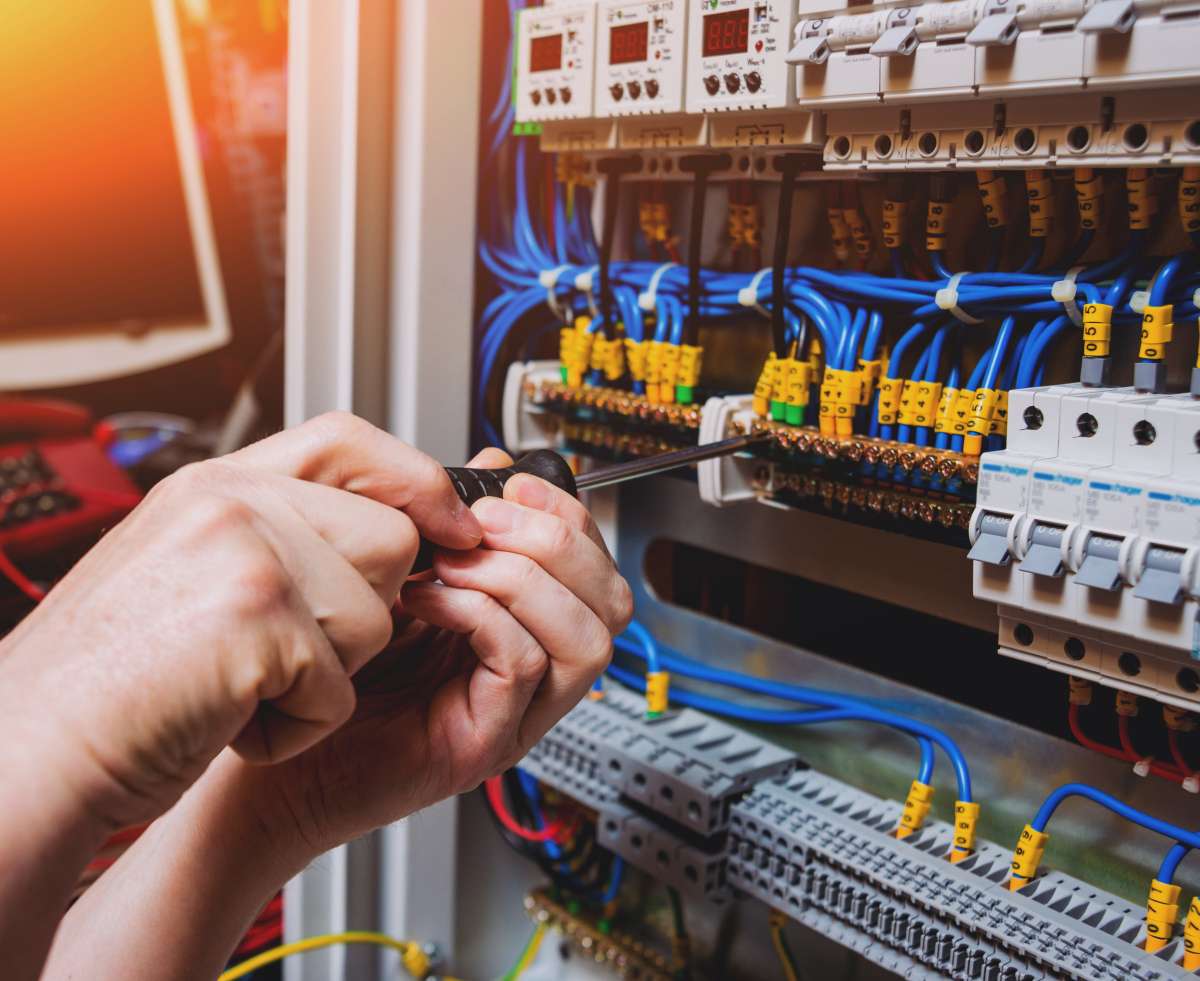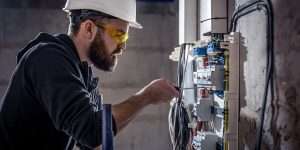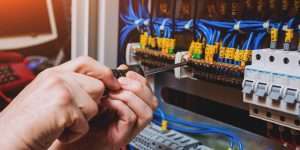At Top Cable we believe that the installation of industrial switchboards is a task that…
The components of an electrical panel
A good knowledge of all the components of an electrical panel is essential for any professional in the sector. An electrical panel, also known as a circuit breaker panel or distribution panel, is essential for the distribution of electrical energy throughout a building. In this post, we want to break down all these components and define each of their functions. We have done this by differentiating between 9 different components of an electrical panel.
1) CIRCUIT BREAKERS
Circuit breakers are the protective devices seen in several rows. Each circuit breaker controls and protects a specific circuit. In the event of an overload or short circuit, the circuit breaker trips to cut off the power supply and prevent damage or fire. They are a key part of ensuring the safety of the installation.
2) DIN RAILS
The horizontal metal rails on which circuit breakers are mounted are DIN rails. Their function among the components of an electrical panel is to facilitate the installation and organisation of modular devices within the panel. They prevent crossovers between cables or situations that may affect the correct performance of the installation.
3) VOLTAGE METERS
At the top of the panel are three digital meters that display the voltage of each phase of the electrical system. These meters provide control and assurance that the system is operating within the proper voltage ranges. This minimises the possibility of a power surge affecting the electrical system.
4) NEUTRAL AND GROUND BUSBAR

These are another component of a basic electrical panel for the safety of the installation. They are connection busbars, usually located on the sides and normally visible as rows of terminals, which are used to connect the two conductors, neutral and ground. These bars ensure a safe and orderly connection of the return and safety cables.
5) WIRING
Wiring is the basis for being able to transmit power and fulfil the main function of an electrical panel. The coloured wires at the bottom of the panel, which are connected to the switches, represent the different phases, the neutral and the earth (green or yellow-green). The colouring makes it easier to identify each type of conductor.
6) TERMINAL MODULES
The modules at the bottom with different cable connections are terminal blocks that allow the orderly and safe connection of multiple cables. This facilitates the safe distribution of power to different circuits.
7) RELAYS AND TIMERS
The relays and timers located in the right-hand modules of the panel allow you to control the operating time of circuits and automate certain functions. These can include industrial control circuits, security systems, burglar alarms and automated lighting control systems.
8) SURGE ARRESTER
A device that protects electrical and electronic equipment from transient voltage spikes. These surges can be caused by lightning, mains failures or the switching on and off of large inductive loads.
9) DIFFERENTIAL SWITCHES
Are part of the compulsory safety devices, imposed by the NFC 15-100 standard on each electrical panel, to protect people against all electrical faults that may occur from earth. Unlike the circuit breaker, it does not protect the equipment, it does not detect overloads or short circuits.




